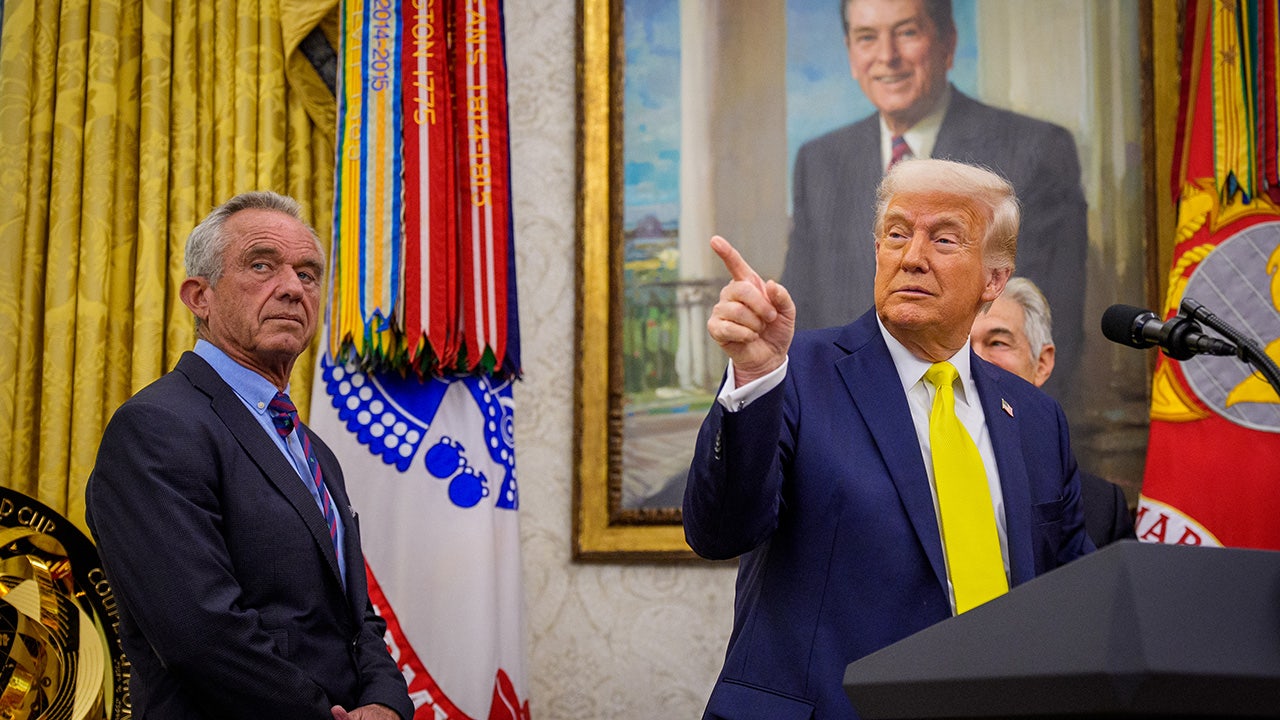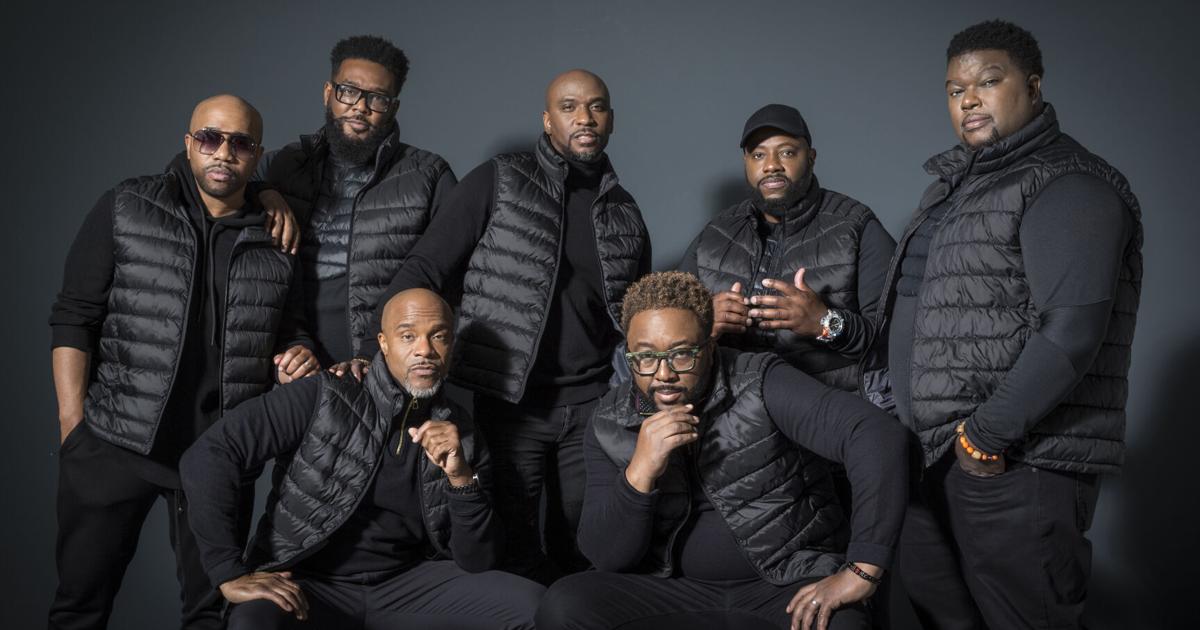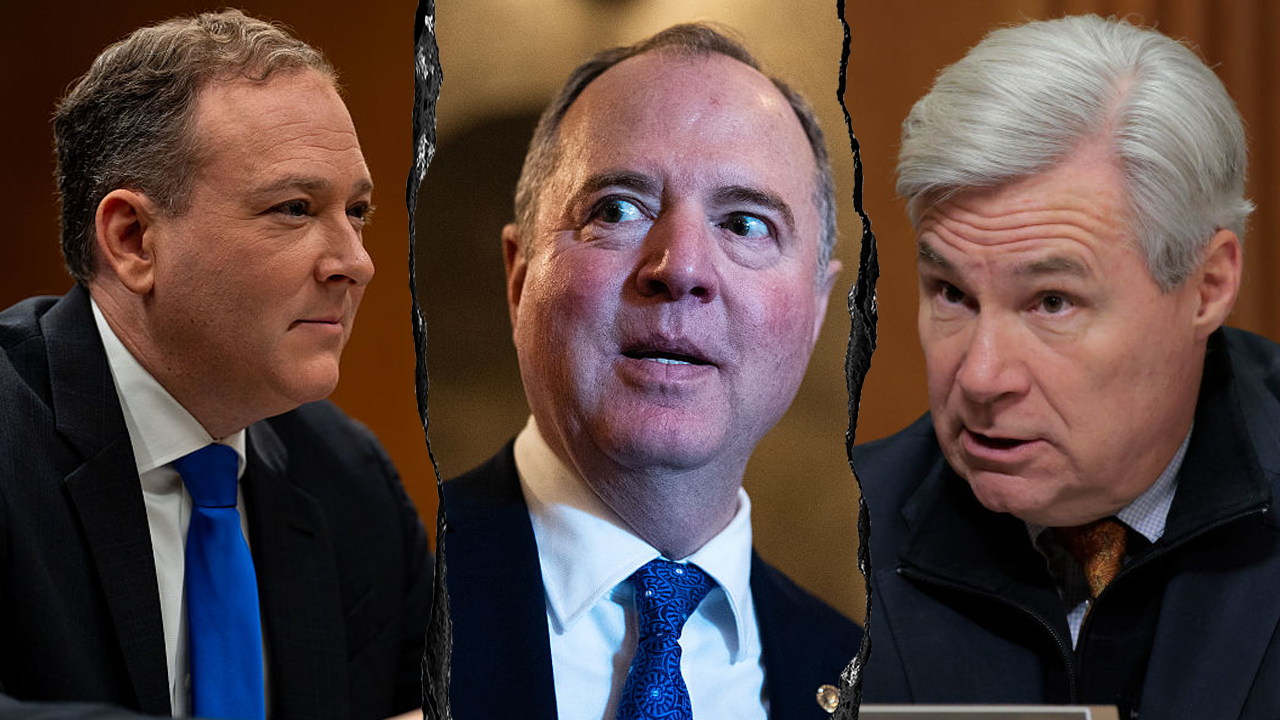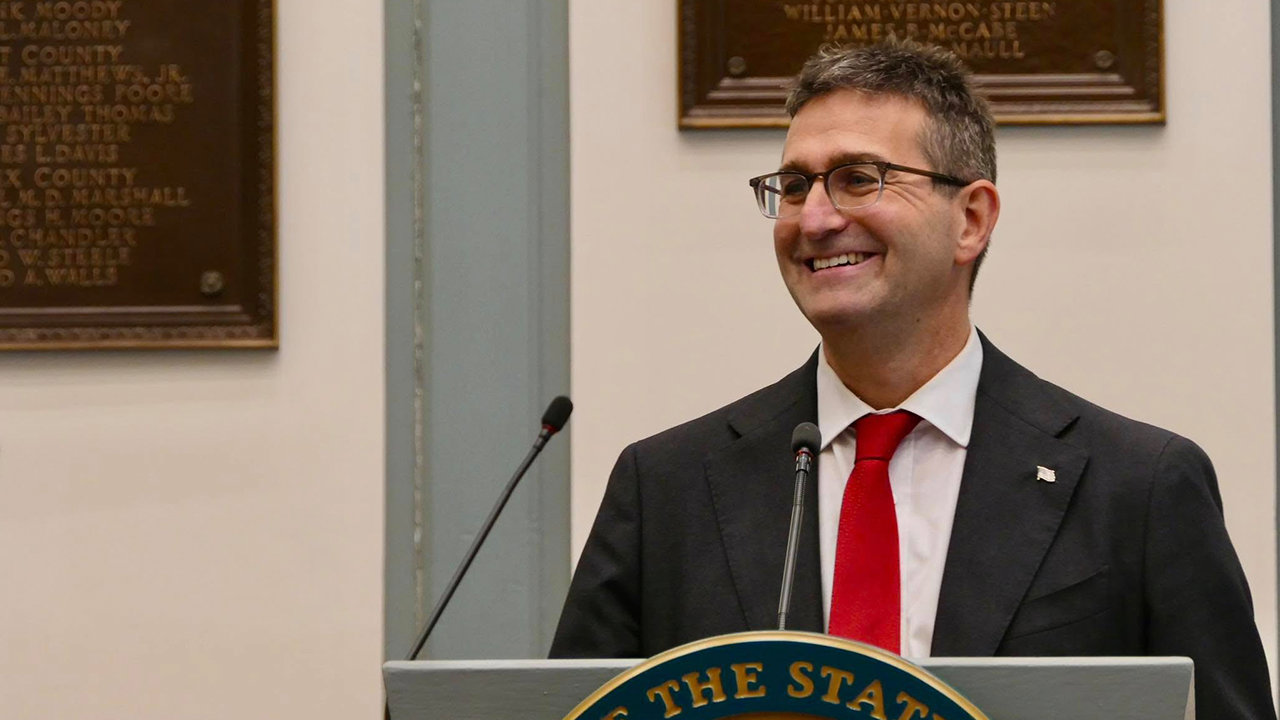New York
YouTubers’ PlayStation Giveaway Causes Chaos in Union Square Park

Union Square Park in Manhattan erupted in chaos on Friday after a throng of what the police estimated to be several thousand young people descended on the area, drawn by the chance to receive video game consoles being given away by two YouTube streamers.
By the time the police dispersed the crowd around 6 p.m., “quite a few” people had been arrested; officers and some of those caught up in the melee had suffered injuries that were still being evaluated; and at least one of the social media stars who had summoned the crowd was facing the prospect of criminal charges, according to a top police official.
“It was uncontrolled. It took us a while to get it under control. And a lot of young people got hurt,” the official, Chief of Department Jeffrey Maddrey, said, speaking against the backdrop of a trash-littered plaza at a news conference after the park had been cleared.
The streamers, Kai Carlo Cenat III and Fanum, had announced plans to hand out PlayStation 5 consoles at the park at 4 p.m. The two are members of the streaming group AMP, which has legions of fans on YouTube and the streaming site Twitch. Mr. Cenat’s YouTube channel has more than 3.6 million followers.
The event was spontaneous and came together without a city permit, Chief Maddrey said. The police learned of the gathering from a social media post at around 1:30 p.m., he added. By 3 p.m., he said, “the post had gone viral.”
Hordes of young people were soon packing the park and spilling onto the surrounding streets and sidewalks, where they blocked cars and pedestrians. The popular Union Square Greenmarket shut down early. Subway trains began bypassing the Union Square station.
As 4 p.m. approached and the crowd grew restless, the Police Department initiated a Level 4 mobilization, its highest-level response. While parts of the crowd remained mostly peaceful, others tipped into unruliness. One cluster of people stormed a construction site and then began hurling building materials, rocks and bottles at one another, the chief said.
“You had people walking around with shovels, axes and other tools of the construction trade,” he said, adding that others had been lighting fireworks and tossing them toward officers and one another.
When the scheduled giveaway time came and went, the pandemonium increased.
Water bottles, basketballs, a computer and fireworks sailed through the crowd. One group of young people pushed back against police officers carrying riot shields as they tried to move in to make arrests. A knot of more than 200 people standing near a flagpole at the center of the park directed a vulgar chant at the police. Images from the scene showed people climbing onto cars stuck in the crowd.
People in the crowd began to “commit acts of violence against the police and the public,” Chief Maddrey said.
By 5 p.m., the police had pushed most of the crowd onto Park Avenue, with hundreds of young people flooding both lanes, stopping traffic, banging on cars and hurling things. Those who refused commands to move up the avenue were tackled and taken into custody.
“That’s my friend you’re arresting,” a teenager yelled at an officer. “That’s my boy.”
“You want to get arrested too?” an officer replied before grabbing the teenager, taking him to the ground and putting him in zip-tie cuffs.
The police pushed a group of young people up the avenue, moving up a block at a time every few minutes as several helicopters hovered overhead.
At 19th Street, a crowd of those being driven north collectively took a knee and started a “Black Lives Matter” chant. At 20th Street, they sat on wicker chairs outside an upscale restaurant as employees locked the doors and looked on from inside. At 22nd, dozens of teenagers stormed through a CVS store, grabbing water bottles, candy and snacks and then distributing them to others in the crowd.
Chief Maddrey said the crowd had been given several chances to leave the area before officers began to make arrests. He said the total number of arrests was still being tallied. Officers loaded some of those they had detained onto a city bus, which itself came under attack as people tried to free those who were being taken away.
Mr. Cenat was taken to safety, and police officials were considering whether to file charges against him related to “inciting a riot,” Chief Maddrey said.
“This shows the power of social media and the danger of social media,” he said.
One of those in the crowd, Josh Ortiz, who lives in the Brownsville section of Brooklyn, said he was at the park to see the two YouTube personalities.
“I just came out because I wanted to see them,” Mr. Ortiz, 18, said. “I think a lot of kids thought they could get a free PC or PlayStation and start making money, but I just wanted to see Kai. He’s the biggest Black creator in America right now.”
He said that things had initially been peaceful but that a few people had “started going crazy.”
“It’s between bothersome and funny,” he said. “There was a big explosion just a second ago, but if you know, like I do, that it’s just kids with fireworks, then it gets kind of funny.”
Mr. Ortiz said Mr. Cenat deserved some blame for the chaos.
“It’s kind of Kai’s fault,” he said, adding that the event “wasn’t planned well” and that Mr. Cenat could have chosen “a more open area.”
As the scene in the park unfolded, a large group of teenagers swarmed the entrance of a nearby Best Buy store, prompting workers to lock the doors.
“These guys are huge,” said a 21-year-old gamer from Queens who would identify himself only as Zap. He said that 90,000 people had been watching Mr. Cenat’s livestream several days ago when he announced the giveaway.
Adam Mass, a 20-year-old student from Brooklyn, said he had come to the park after hearing about the pandemonium.
“I heard they were out here,” Mr. Mass said of the two streamers, whom he referred to as a “big deal.”
“I didn’t even want to get a giveaway,” he added. “I knew something was happening, though, so we came here.”
Hurubie Meko contributed reporting.

New York
Video: How a Mexican Navy Ship Crashed Into the Brooklyn Bridge

On Saturday, a Mexican Navy ship on a good will tour left a New York City pier bound for Iceland. Four minutes later, it crashed into the Brooklyn Bridge. [Spanish] “It’s falling!” [English] “No way!” Here’s what happened. The Cuauhtémoc had been docked on the Lower East Side of Manhattan for four days, open to visitors looking for a cultural experience. As the ship prepared to leave on Saturday night, a tugboat arrived to escort it out of its pier at 8:20 p.m. The ship’s bow, the front of the vessel, faced Manhattan, meaning it would need to back out of its berth into the East River. As the Cuauhtémoc pulled away from shore, the tugboat appeared to push the side of the ship, helping to pivot the bow south toward its intended route. The river was flowing northeast toward the Brooklyn Bridge and the wind was blowing in roughly the same direction, potentially pushing the ship toward a collision. Photos and videos suggest the tugboat was not tied to the ship, limiting its ability to pull the ship away from the bridge. The Cuauhtémoc began to drift north, back first, up the river. Dr. Salvatore Mercogliano, who’s an adjunct professor at the U.S. Merchant Marine Academy, told The Times that the ship appeared to be giving off a wake. This suggests its propellers may have been running in reverse, pushing it faster toward the bridge. The tugboat sped alongside the ship as it headed north, possibly trying to get in front of it and help the ship maneuver the other way. But it was unable to cut the ship off or reverse its course. All three masts crashed into the underside of the Brooklyn Bridge at approximately 8:24 p.m., four minutes after the ship had left the pier, causing the top sails to collapse. Crew members standing on the masts during the collision were thrown off entirely. Others remained hanging from their harnesses. A New York City patrol boat arrived about eight minutes after the collision, followed quickly by a fire department boat. Additional law enforcement and emergency medical services removed the wounded for treatment. According to the Mexican Navy, two of the 227 people aboard the ship were killed and 22 others were injured.
New York
Audio Data Shows Newark Outage Problems Persisted Longer Than Officials Said

On April 28, controllers at a Philadelphia facility managing air traffic for Newark Liberty International Airport and smaller regional airports in New Jersey suddenly lost radar and radio contact with planes in one of the busiest airspaces in the country.
On Monday, two weeks after the episode, Sean Duffy, the secretary of transportation, said that the radio returned “almost immediately,” while the radar took up to 90 seconds before it was operational.
A Times analysis of flight traffic data and air traffic control feed, however, reveals that controllers were struggling with communication issues for several minutes after transmissions first blacked out.
The episode resulted in multiple air traffic controllers requesting trauma leave, triggering severe flight delays at Newark that have continued for more than two weeks.
Several exchanges between pilots and controllers show how the outage played out.
Outage Begins
Air traffic recordings show that controllers at the Philadelphia facility first lost radio and radar communications for about a minute starting just before 1:27 p.m., after a controller called out to United Flight 1951, inbound from Phoenix.
The pilot of United 1951 replied to the controller’s call, but there was no answer for over a minute.
1:26:41 PM
Controller
OK, United 1951.
1:26:45 PM
Pilot
Go ahead.
1:27:18 PM
Pilot
Do you hear us?
1:27:51 PM
Controller
How do you hear me?
1:27:53 PM
Pilot
I got you loud and clear now.
Two other planes reached out during the same period as United 1951 — a Boeing 777 inbound from Austria and headed to Newark, and a plane whose pilot called out to a controller, “Approach, are you there?” Their calls went unanswered as well.
Radio Resumes, With Unreliable Radar
From 1:27 to 1:28 p.m., radio communications between pilots and controllers resumed. But soon after, a controller was heard telling multiple aircraft about an ongoing radar outage that was preventing controllers from seeing aircraft on their radarscopes.
One of the planes affected by the radar issues was United Flight 674, a commercial passenger jet headed from Charleston to Newark.
1:27:32 PM
Pilot
United 674, approach.
1:27:36 PM
Controller
Radar contact lost, we lost our radar.
1:30:34 PM
Controller
Turn left 30 degrees.
1:31:03 PM
Pilot
All right, we’re on a heading of 356. …
1:31:44 PM
Controller
I see the turn. I think our radar might be a couple seconds behind.
Once the radio started operating again, some controllers switched from directing flights along their planned paths to instead providing contingency flight instructions.
At 1:28 p.m., the pilot of Flight N16NF, a high-end private jet, was called by a controller who said, “radar contact lost.” The pilot was then told to contact a different controller on another radio frequency.
About two and a half minutes later, the new controller, whose radar did appear to be functioning, instructed the pilot to steer towards a location that would be clear of other aircraft in case the radio communications dropped again.
Flight N426CB, a small private jet flying from Florida to New Jersey, was told to call a different radio frequency at Essex County Airport, known as Caldwell Airport, in northern New Jersey for navigational aid. That was in case the controllers in Philadelphia lost radio communications again.
1:27:57 PM
Controller
If for whatever reason, you don’t hear anything from me further, you can expect to enter right downwind and call Caldwell Tower.
1:29:19 PM
Controller
You just continue on towards the field. They’re going to help navigate you in.
This is in case we are losing our frequencies.
1:29:32 PM
Pilot
OK, I’m going over to Caldwell. Talk to you. Have a good afternoon.
Minutes Later, Radar Issues Persist
According to the Federal Aviation Administration, aircraft reappeared on radarscopes within 90 seconds of the outage’s start, but analysis of air traffic control recordings suggest that the radar remained unreliable for at least some radio frequencies for several minutes after the outage began around 1:27 p.m.
At 1:32 p.m., six minutes after the radio went quiet, Flight N824TP, a small private plane, contacted the controller to request clearance to enter “Class B” airspace — the type around the busiest airports in the country. The request was denied, and the pilot was asked to contact a different radio frequency.
1:32:43 PM
Pilot
Do I have Bravo clearance?
1:32:48 PM
Controller
You do not have a Bravo clearance. We lost our radar, and it’s not working correctly. …
If you want a Bravo clearance, you can just call the tower when you get closer.
1:32:59 PM
Pilot
I’ll wait for that frequency from you, OK?
1:33:03 PM
Controller
Look up the tower frequencies, and we don’t have a radar, so I don’t know where you are.
The last flight to land at Newark was at 1:44 p.m., but about half an hour after the outage began, a controller was still reporting communication problems.
“You’ll have to do that on your own navigation. Our radar and radios are unreliable at the moment,” a Philadelphia controller said to a small aircraft flying from Long Island around 1:54 p.m.
Since April 28, there has been an additional radar outage on May 9, which the F.A.A. also characterized as lasting about 90 seconds. Secretary Duffy has proposed a plan to modernize equipment in the coming months, but the shortage of trained staff members is likely to persist into next year.
New York
Two Men’s Fight to Protect the Geese at the Central Park Reservoir

Whether goslings live or die at the Central Park Reservoir could be up to two 70-something, nature-loving men who first crossed paths there this winter.
Edward Dorson, a wildlife photographer and regular visitor to the reservoir, learned in 2021 that federal workers were destroying the eggs of Canada geese there as part of a government safety program to decrease bird collisions with airplanes. He tried to stop it.
He reached out to animal rights organizations and wrote letters to various government agencies. He got nowhere.
Then in December, he met Larry Schnapf, a tough-talking environmental lawyer, who spotted Mr. Dorson admiring the birds and introduced himself. Mr. Dorson told him about the nest destruction. Mr. Schnapf, in his 40-year legal career, had mostly focused on redeveloping contaminated properties but had picked up the occasional pro bono passion project. “I told him I take on quixotic pursuits,” Mr. Schnapf said.
Now, they are teaming up to protect the eggs of a small population of Canada geese that nest around the reservoir, a popular attraction for joggers and bird watchers. The battle will undoubtedly be uphill: They are lobbying multiple government agencies during a fraught time in aviation where bird strikes are one of many concerns, on behalf of a bird often described as a nuisance because of its honking cries and the droppings it leaves on lawns, parks and golf courses.
The men say they appreciate the importance of protecting planes. But they are seeking to exempt the Central Park Reservoir from the egg destruction program so that it can serve as a sanctuary for the nesting geese. They argue that Central Park is far enough from the area’s airports that the geese do not pose a major problem.
Mr. Schnapf said he plans to send a cease-and-desist letter to the Port Authority of New York and New Jersey, which oversees five major airports in the region, including Kennedy International Airport, Newark Liberty International Airport and LaGuardia Airport. The agency works with an arm of the U.S. Department of Agriculture on the safety program. “I think this is all unlawful,” he said. “These are protected animals.”
Port Authority officials did not comment on the advocacy plans of the two men. But they stressed that government efforts like those underway in Central Park were part of creating safer conditions for air travel.
“Managing wildlife risks — especially from resident Canada geese — near our airports is a life safety imperative and essential to maintaining safe operations,” said Laura Francoeur, the Port Authority’s chief wildlife biologist.
Although Canada geese are protected under the Migratory Bird Treaty Act, authorities have obtained a waiver to control the population. The birds, which can weigh as much as 19 pounds and have a wingspan up to 5.5 feet, according to the Cornell Lab of Ornithology, can get sucked into plane engines and bring an aircraft down.
Between 2008 and 2023, there were 451 aviation accidents involving commercial aircraft in the United States, with a total of 17 caused by bird strikes, producing five injuries and no fatalities, according to the National Transportation Safety Board.
New York City tightened its grip on Canada geese in 2009, after a collision with a flock caused US Airways Flight 1549, piloted by Chesley B. Sullenberger III, to lose both its engines shortly after it took off from LaGuardia. The plane was forced into an emergency water landing in what is now commonly known as the “miracle on the Hudson.”
The event prompted the Port Authority to ask the Department of Agriculture for help. In 2010, federal wildlife workers took on the management of Canada geese populations within seven miles of the city’s major airports, including in city parks.
Mr. Schnapf calls the current rules an overreach, since Federal Aviation Administration guidelines call for wildlife management only within five miles of airports. A Port Authority spokeswoman said the agency honors all federal regulations, including addressing wildlife hazards within five miles of airports. But she added that the agency will often go beyond that radius when specific threats arise.
Data from the F.A.A. shows that Canada geese strikes at LaGuardia and Kennedy Airports have remained consistent over the last two decades, with between zero and four instances per year.
Canada geese thrive in people-friendly landscapes, and their population has boomed throughout North America over the last four decades. Many geese have become so comfortable in parks and other green spaces, like the reservoir, that they have stopped migrating, becoming year-round residents.
There are about 228,000 resident Canada geese in New York State, up from 150,000 in 2002. The state’s Department of Environmental Conservation would like to see that number shrink to 85,000.
The two men fighting for the Central Park Reservoir’s resident geese were both born in the Bronx, are similar in age and diet (one is a vegetarian, the other a vegan). But the similarities more or less end there.
Mr. Dorson, 77, an accomplished underwater photographer and conservationist with a background in the arts, is a soft-spoken lover of hard-to-love animals — he helped start a shark sanctuary in Palau, in Micronesia. Mr. Schnapf, 72, is a fast-talking, fast-acting networker who is not afraid to make noise.
“I told Ed,” he said, “you’ve got to rattle the bureaucracy.”
Mr. Dorson and Mr. Schnapf are hoping to meet with officials from the Port Authority, the Central Park Conservancy and the city’s Department of Environmental Protection, which oversees the reservoir, among other decision makers.
”All we’re trying to do is get them to talk to us, so we can come up with a plan so at least some of those eggs can be hatched,” Mr. Schnapf said.
Mr. Dorson admitted that, right now, “I don’t see too many people like me who are worried about the geese.”
“But maybe 10 years from now, when there are no geese here, then people might feel the loss,” he said. “I’d like to change that.”
-

 Education1 week ago
Education1 week agoA Professor’s Final Gift to Her Students: Her Life Savings
-

 Politics1 week ago
Politics1 week agoPresident Trump takes on 'Big Pharma' by signing executive order to lower drug prices
-

 Culture1 week ago
Culture1 week agoTest Yourself on Memorable Lines From Popular Novels
-

 Education1 week ago
Education1 week agoHarvard Letter Points to ‘Common Ground’ With Trump Administration
-

 News1 week ago
News1 week agoAs Harvard Battles Trump, Its President Will Take a 25% Pay Cut
-

 Culture1 week ago
Culture1 week agoBook Review: ‘Original Sin,’ by Jake Tapper and Alex Thompson
-

 News1 week ago
News1 week agoWhy Trump Suddenly Declared Victory Over the Houthi Militia
-

 News1 week ago
News1 week agoAustin Welcomed Elon Musk. Now It’s Weird (in a New Way).















